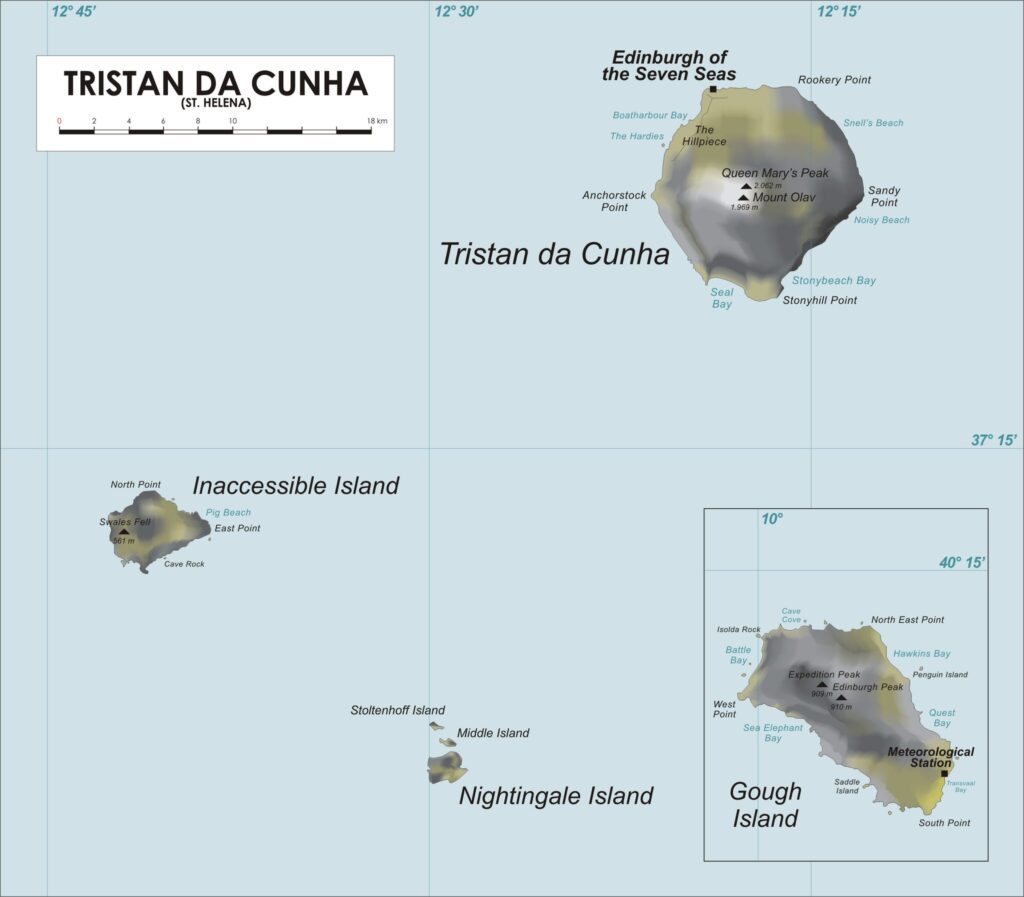

Fascinating Stories from Tristan da Cunha: The Most Isolated Island on Earth
Tristan da Cunha is often called the most remote inhabited island in the world. Located in the South Atlantic Ocean, it sits over 1,500 miles from South Africa and 2,000 miles from South America. With a population of just 250 people, life on Tristan has remained largely untouched by the outside world. But don’t let its remoteness fool you—this tiny volcanic island is packed with strange, dramatic, and inspiring stories.
1. The Island That Almost Became American
In 1810, an American named Jonathan Lambert arrived on Tristan da Cunha and declared himself the ruler. He named the island “The Islands of Refreshment” and planned to turn it into a trading hub. However, his rule was short-lived—within two years, Lambert and his companions mysteriously died, leaving only a single survivor.
Later, in 1816, the British took formal control of the island, partly to prevent it from being used by American whalers or Napoleon’s allies (since Napoleon was exiled on nearby St. Helena). Today, Tristan remains a British Overseas Territory—but for a brief moment in history, it nearly became an American outpost!
2. The Volcanic Eruption That Forced an Evacuation
In 1961, life on Tristan da Cunha changed overnight when the island’s volcano unexpectedly erupted.
The ground began shaking, and a huge crack opened up near the only village, sending lava and ash pouring out. The entire 250-person population was forced to evacuate, first to nearby Nightingale Island, then to Cape Town, and finally to England.
For the first time, the islanders saw the modern world—cars, supermarkets, electricity, and television. Many were tempted to stay in the UK, but after two years of exile, most of them chose to return home, despite the hardships of island life. Today, the volcano is still considered active, but the islanders remain resilient.
3. The Island with Only a Few Last Names
Because of its small population and extreme isolation, nearly every resident on Tristan da Cunha is related. There are just a handful of last names on the island, all tracing back to a few original settlers from the 19th century, including men from England, Scotland, the USA, and Italy.
The most common surnames on Tristan include:
- Glass (from a Scottish soldier)
- Green (from an English sailor)
- Hagan (from an Irishman)
- Repetto & Lavarello (from two Italian shipwreck survivors)
Because of this, the island has a high rate of genetic disorders, including a rare form of asthma that is unusually common among its residents.
4. The Mail Boat That Comes Just a Few Times a Year
Tristan da Cunha has no airport and is only reachable by boat. The nearest land, St. Helena, is over 1,500 miles away. The only way to get to or from the island is on one of a few supply ships that visit just 9 times a year from Cape Town, South Africa.
Even mail takes months to arrive. If you send a letter to someone on Tristan, you might not get a reply for six months to a year. This means that life on the island moves at an incredibly slow and peaceful pace.
5. The Wreck of the HMS Challenger and the Ghost Ship of Tristan
The waters around Tristan are treacherous, and many ships have met their fate here. One of the most famous shipwrecks was the HMS Challenger, a British survey ship that crashed into the island in 1875.
Another eerie story is that of the “Ghost Ship of Tristan”, the schooner America, which was found adrift with no crewnear the island in 1893. The ship’s cargo and supplies were untouched, and no sign of the crew was ever found. To this day, no one knows what happened to them.
6. The Tristan Curse: Ships That Never Return
There is a legend among sailors that Tristan da Cunha is cursed—because ships that visit often meet disaster afterward. Some eerie examples include:
- The West Riding (1892) – Sailed away from Tristan but sank in the Atlantic a few weeks later.
- The Italia (1893) – Shipwrecked on the island, but its surviving crew mysteriously vanished.
- The Sir Gareth (1937) – Left Tristan, only to disappear without a trace in the South Atlantic.
Even today, sailors consider the waters around Tristan to be unpredictable and dangerous.
7. The Island That Has No Crime
Tristan da Cunha is one of the safest places in the world. With only 250 people, everyone knows each other, and there has never been a reported serious crime. The island has a police officer, but their job mostly involves making sure sheep don’t wander into gardens.
People don’t lock their doors, and money isn’t a big deal because there are no banks or ATMs. The island runs on bartering and community support, and everyone has their own job to keep the island running.
8. A Special Relationship with the British Royal Family
Despite their remote location, the people of Tristan da Cunha have a strong connection with the British Royal Family. In 2001, Prince Philip (Queen Elizabeth II’s husband) visited the island, and the islanders gave him the title of “Chief Islander”.
When Prince William and Kate Middleton got married in 2011, the islanders sent them handmade gifts of woolen socks and scarves. Even today, the people of Tristan are proudly British and celebrate royal events—even if they hear about them months after they happen!
Leave a Reply